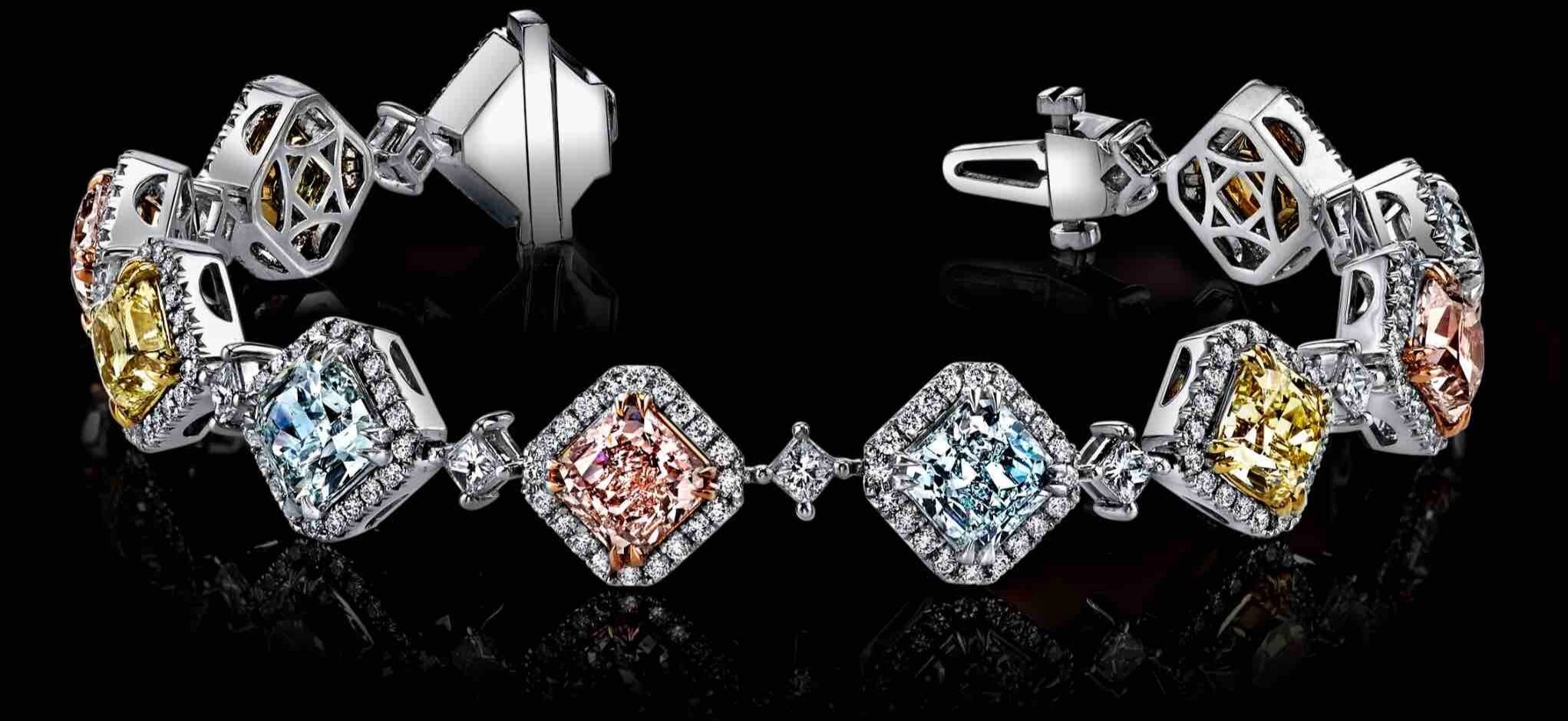Frequently Asked Questions
Color Diamonds
-
Color diamonds are rare. For every color diamond found, including fancy yellow, blue and pink diamonds, there are at least 10,000 colorless ones. When the color is intense, it is classified as a fancy color diamond. For fancy color diamonds, the deeper, purer and more saturated colors are usually the rarest, most costly and most desirable.
-
Diamonds are the hardest of all gemstones and therefore reflect light with brilliance that outshines all other gemstones. Color diamonds have emerged as a favorite gemstone that outshines all other gemstones because of this unique glow. And because they are so rare, they make a unique style statement when set in jewelry.
-
Diamonds occur in a plethora of colors—from pure whites and soft pinks to blues, green, yellow, orange and red. Each color is created when a diamond possesses a unique structure or composition of chemical elements. The stronger the color, the rarer and more valuable the diamond is.
-
More than 250 tons of ore need to be crushed and process to yield just one carat of rough-gem-quality diamond
Only one rough diamond in a million weigh one carat or more and only one in 10,000 diamonds has a fancy color.
Less than one tenth of 1% are pink diamonds, and out of this tiny amount, only a handful are investment quality diamonds.
-
Unlike colorless stones where each of the basic four main characteristics is of equal value, the color, or color combination, in these diamonds plays an important role. This is because there are some colors that are rarer than others and thus retain far more value. Additionally, there are some extremely rare hues that are hard to come by and can fetch rather impressive sums.
-
Each Color Diamond is graded for its color intensity with the faintest of shades to the most intense. Every color category for color diamonds has different intensity levels. This means that all of the intensity levels do not exist for every color. For example, black diamonds are only found in one intensity level, Fancy Black. However, for many diamond colors the intensity levels are as follows, from lowest to highest: Faint, Very Light, Light, Fancy Light, Fancy, Fancy Intense, Fancy Vivid, and Fancy Deep, and Fancy Dark.
-
There are color diamonds in every color of the rainbow, and more, but some are easier to obtain than others. Color diamonds include pink, red, orange, yellow, green, blue, purple, violet, brown, gray, black, and white. There are also diamonds that are known to change colors and these are called chameleon diamonds. Pure colors are desirable for a diamond because when the primary color stands on its own, it is more visible. However, this also depends on other elements such as color intensity, size, and shape.
-
Yellow diamonds are yellow because the element nitrogen is incorporated into their carbon crystal structure. The nitrogen modifies the light that is traveling through the diamond and absorbs the blue part of the visible spectrum. Yellow diamonds that have a higher concentration of color more intense than Z color, are considered “fancy” colored diamonds.
-
Blue diamonds are blue because the element of boron is incorporated into their carbon structure. Blue diamonds are very rare and scarce because the element Boron is not abundantly found in the Earth’s crust. Many blue diamonds are modified with a grey secondary tone, or an uneven saturation with areas of colorless windowing, making natural blue diamonds with exceptional saturation and brilliance extremely rare.
-
The color origin of a pink diamond is somewhat of a mystery.
Unlike other fancy color diamonds (blues, greens, yellows, etc.) that get their color from foreign trace elements trapped inside the diamond’s structure the pink color in pink diamonds is due to disturbances made to the diamond’s structure during the diamond’s growth process, creating graining planes that reflects back the light as a pink hue.
These diamonds have a mutation within their crystal lattice that alters the stone’s molecular structure. With enough of these “defect centers,” the diamond absorbs certain wavelengths of green light, resulting in a pink appearance.

